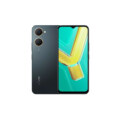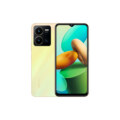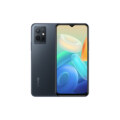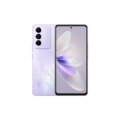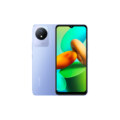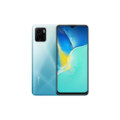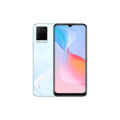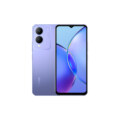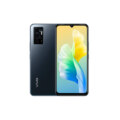Vivo V29
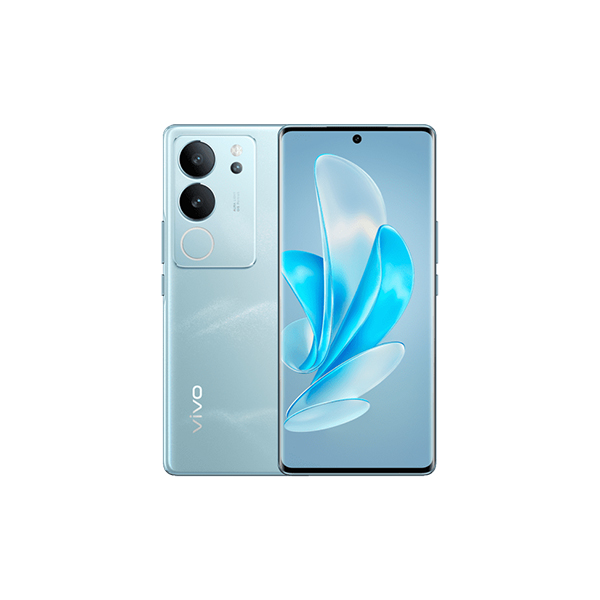

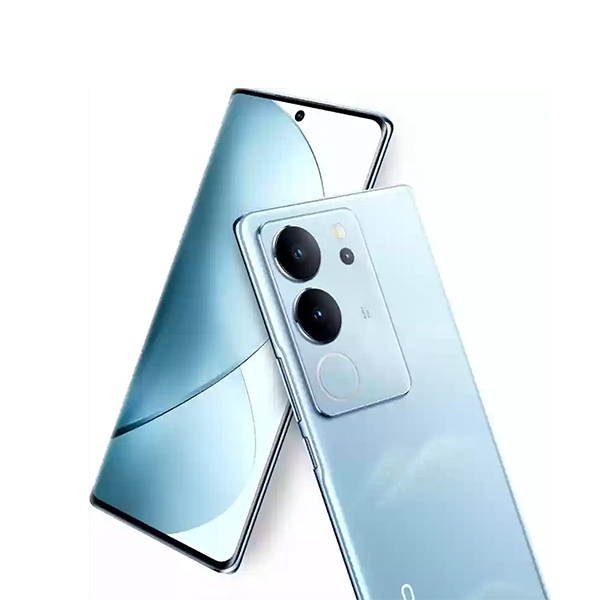
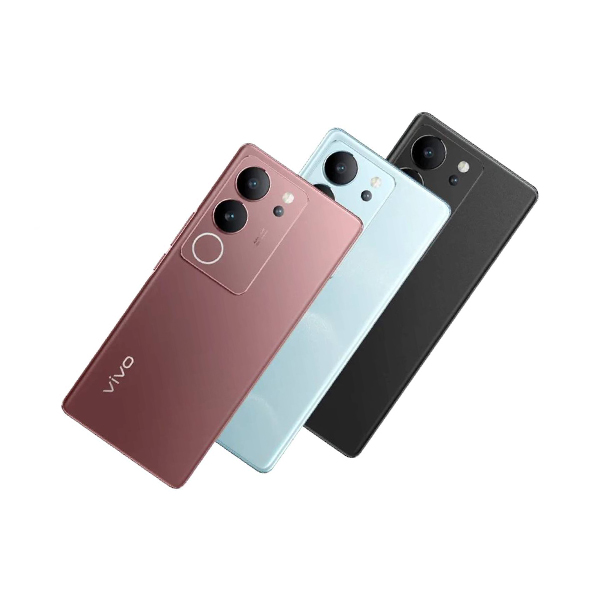
Specs
General
| Device Type | Vivo Phone |
| Announced | 31 July, 2023 |
| Released | 11 August, 2023 |
| Status | Discontinued |
Design
| Water Resistant | IP68 dust/water resistant (up to 1.5m for 30 min) |
| Dimensions | 164.2 x 74.4 x 7.5 mm |
| Weight | 186 g |
| Protection | Glass front, glass back, plastic frame |
| Colors | Space Black, Himalayan Blue, Purple Fairy, Majestic Red |
Display
| Refresh Rate | 120 Hz |
| Display Type Display Technology => A number of display technologies and types used in mobile phones => TFT (Thin Film Transistor), IPS (In-Place Switching), OLED (Organic Light Emitting Diode), AMOLED (Active-Matrix Organic Light-Emitting Diode), Super AMOLED (an even advanced version of AMOLED), Resistive Touchscreen (Resistive touchscreens contain two layer of conductive material with a very small gap between them which acts as a resistance), Capacitive Touchsceen (Capacitive touchscreen technology consists of a layer of glass coated with a transparent conductor) | AMOLED |
| Size | 6.64 inches |
| Resolution | 1260 x 2800 pixels |
| Display Colors Display Colors is refers to the number of different shades of colors that the screen is capable of displaying => 64K colors, 256K colors and 16 million colors, Obviously 16M is highest available range of colors and better than others. | 1 B |
| Pixel Density Pixel Density (PPI) is refers to the concentration of pixels on a particular display, measured in pixels per inch (ppi). Pixel density is calculated by dividing the diagonal pixel resolution of a display by its diagonal size, higher pixel density better display quality. | ~ 453 ppi |
| Touch Screen | Capacitive Touchscreen, Multitouch |
| Features | HDR10+ |
| Secondary Display | No |
Camera
| Front Camera | 50 MP, f/2.0, 22mm (wide) |
| Camera Setup | Double |
| Main Camera Camera is able to capture photographs and usually videos, The most important characteristics of a camera are the resolution (measured in megapixels), lens focus type (fixed or automatic), higher megapixel cameras are known to capture higher quality photos, but not always a good measurement of the photos quality. |
50 MP, f/1.9, (wide) 8 MP, f/2.2, (ultrawide) 2 MP, f/2.4, (depth) |
| Video | 4K@30fps, 1080p@30fps |
| Camera Features | Phase detection, Geo-tagging, touch focus, face detection, HDR, panorama |
| Flash Flash Light => There is commonly two types of flash lights are used in camera mobile phones, LED Flash (LED flash offers lower power consumption with drive circuitry that takes up very little room, LEDs can be strobed faster than any other light source), Xenon Flash (xenon flash produces an extremely intense full-spectrum white light for a very short duration) | Ring-LED flash |
Hardware
| Operating System OS => Every computer system run on a base software called Operating System (OS). Operating System controls all basic operations of the computer (such as smartphone, PDAs, tablet computers and other handheld devices). The Operating System allows the user to install and run third party applications (apps), apps are used to add new functionality to the device. | Android 13 |
| Chipset Chipset is a group of integrated circuits designed to perform one or a more dedicated functions, often with real time computing constraints, Popular smartphones are equipped with more advanced embedded chipsets that can do many different tasks depending on their programming. | Qualcomm Snapdragon 778G 5G |
| CPU CPU (Central Processing Unit) mostly known as processors, CPU processes instructions in order to carry out certain functions that make your device operate properly. Processors are often described as the brain of computers, smartphones and tablets, Smartphones and tablets rely on processors to carry out their every task, Processors are an incredibly important factor in selecting any type of computing device, including your smartphone. | Octa-core (1x2.4 GHz Cortex-A78 & 3x2.2 GHz Cortex-A78 & 4x1.9 GHz Cortex-A55) |
| Architecture | 64 bit |
| Fabrication | 6 nm |
| GPU GPU (Graphics Processing Unit) is a single-chip processor designed to rapidly manipulate and alter memory to accelerate the creation of images in a frame buffer intended for output to a display, This includes things such as lighting effects, object transformations, and 3D motion. | Adreno 642L |
| RAM (Memory) RAM (Random Access Memory) is a type of computer memory that can be accessed randomly, any byte of memory can be accessed without touching the preceding bytes that allows information to be stored and accessed quickly from random locations. RAM is the most common type of memory found in computer systems, smartphones, tablets and other electronic devices. | 12 GB |
| Internal Storage Internal Storage is a data storage space (flash memory) mostly used in smartphones, tablets and other electronic devices where operating system, apps, music, photos, videos, files and other user data Is stored. | 256GB Built-in |
| Card Slot Memory Card Slot is a special slot for inserting a memory card. Memory cards allow you to expand the phone's built-in memory, A memory card (sometimes called a flash memory card or a storage card) is a small storage medium used to store data such as text, pictures, audio, and video, for use on small, portable or remote computing devices such as mobile phones, mp3 players, digital cameras. | |
| Sensors Sensors are electronic components that detects and responds to some type of input from the physical environment. The specific input could be light, heat, motion, moisture, pressure and location, The output is generally a signal that is converted to use in computing systems, a location sensor, such as a GPS receiver is able to detect current location of your electronic device. | Accelerometer, Compass, Fingerprint (under display, optical), Gyro, Proximity |
Network
| SIM TYPE SIM (Subscriber Identity Module) is a small card that contains mobile network subscriber's account information. This allows the phone using the card to attach to a mobile network. The SIM card is most commonly associated with GSM and UMTS mobile networks. Moving a SIM card from one phone to another allows a subscriber to switch mobile phones without having to contact their mobile network carrier. SIM cards can also be used by a phone to store limited amounts of data, such as phone numbers and text messages. | Nano SIM |
| SIM Technology | Dual Sim, Dual Standby (Nano-SIM) |
| 2G Network | GSM 850 / 900 / 1800 / 1900 |
| 3G Network | HSDPA 850 / 900 / 1700(AWS) / 1900 / 2100 |
| 4G Network | LTE band 1(2100), 2(1900), 3(1800), 4(1700/2100), 5(850), 8(900), 34(2000), 38(2600), 39(1900), 40(2300), 41(2500) |
| 5G Network | 5G SA/NSA |
Multimedia
| FM Radio | |
| Stereo Speakers | NO |
| Loudspeaker | YES |
| Audio Jack | NO |
| Audio Features | 24-bit/192kHz Hi-Res audio |
Connectivity
| Wi-fi Wi-Fi is a popular wireless networking technology using radio waves to provide high-speed network connections that allows devices to communicate without cords or cables, Wi-Fi is increasingly becoming the preferred mode of internet connectivity all over the world. | Wi-Fi 802.11 a/b/g/n/ac, dual-band, Wi-Fi Direct |
| Bluetooth Bluetooth is a wireless communications technology for exchanging data between mobile phones, headsets, computers and other network devices over short distances without wires, Bluetooth technology was primarily designed to support simple wireless networking of personal consumer devices. | 5.2, A2DP, LE, aptX HD, aptX Adaptive |
| GPS GPS The Global Positioning System is a satellite-based radio navigation system, GPS permits users to determine their position, velocity and the time 24 hours a day, in all weather, anywhere in the world, In order to locate your position, your device or GPS receiver must have a clear view of the sky. | GPS (L1), GLONASS (G1), BDS (B1I), GALILEO (E1), QZSS (L1) |
| USB | USB Type-C 2.0, OTG |
| EDGE EDGE (Enhanced Data GSM Environment) is a wireless network technology generally considered the next step in the 2G network offers data transfer rates up to four times faster than ordinary GSM networks, Generally, EDGE is used for the purpose of wireless data transfer, such as sharing pictures and videos or browsing the Internet via a mobile phone connection. | |
| GPRS GPRS (General Packet Radio Service) is a packet oriented mobile data service on the 2G and 3G cellular communication system's global system for mobile communications (GSM), Generally, GPRS is used for the purpose of wireless data transfer, such as sharing pictures and videos or browsing the Internet via a mobile phone connection. | |
| Speed | 3G (HSPA 42.2/5.76 Mbps), 4G LTE-A, 5G capable |
| Wi-fi Hotspot | |
| NFC NFC (Near field communication) is a set of standards for smartphones and similar devices to establish peer-to-peer radio communications with each other by touching them together or bringing them into proximity, usually no more than a few inches. |
Features
| Messaging | SMS(threaded view), MMS, Email, Push Mail, IM |
| Web Browser Web Browser => a web browser is a software application used to locate, retrieve and display content on the World Wide Web, including Web pages, images, video and other files, The primary function of a web browser is to render HTML, the code used to design or markup webpages. | HTML5 |
| Games | Built-in + Downloadable |
| Torch |
Battery
| Battery Type Battery Type => Cell phones run on various kinds of batteries depending on the manufacturer, phone size or shape and features. There are basically four types of cell phone batteries => Lithium Polymer, Lithium Ion, Nickel Metal Hydride and Nickel Cadmium. | Li-Ion (Lithium Ion) |
| Capacity Battery Capacity is a measure (typically in Amp-hr) of the charge stored by the battery, and is determined by the mass of active material contained in the battery. The battery capacity represents the maximum amount of energy that can be extracted from the battery under certain conditions. | 4600 mAh |
| Placement | Non-removable |
| Wireless Charging Wireless Charging (Inductive Charging) uses an electromagnetic field to transfer energy between two objects. This is usually done with a charging station. Energy is sent through an inductive coupling to an electrical device, which can then use that energy to charge batteries or run the device. | No |
| Extra |
80W wired 50% in 17 min (advertised) |
Vivo V29 Detailed Review
Introduction: The Vivo V29 was launched in mid-2023 as part of Vivo’s premium V-series, aimed at users seeking a balance between style and performance. It boasts significant improvements in display quality, camera system, and fast charging compared to its predecessor, the V27. This review covers the design, display, performance, camera, battery life, software, and more, along with a summary of pros and cons.
Specifications at a Glance:
- Display: 6.78-inch AMOLED (2800 x 1260 pixels, 453 ppi)
- Processor: Qualcomm Snapdragon 778G+ (8-core)
- RAM: 8 GB / 12 GB
- Storage Options: 128 GB / 256 GB
- Rear Cameras: Triple setup (50 MP wide, 8 MP ultrawide, 2 MP depth)
- Front Camera: 50 MP with autofocus
- Battery: 4600 mAh with 80W fast charging
- Operating System: Funtouch OS 13 (based on Android 13)
- Dimensions: 164.18 x 74.37 x 7.46 mm
- Weight: 186 grams
Design and Build Quality
Aesthetics:
- Premium Finish: The Vivo V29 features a sleek, glass back with a glossy finish, giving it a premium feel. The camera module is distinct, with a unique circular arrangement, offering a modern aesthetic.
- Color Options: It comes in attractive color options like Starry Purple and Black, adding a touch of elegance.
Durability:
- Glass Build: The front and back are made of glass, though Vivo does not specify Gorilla Glass protection.
- IP54 Rating: Offers dust and splash resistance, ensuring moderate protection from daily elements.
Ergonomics:
- Slim Profile: At 7.46 mm, the V29 is one of the slimmest smartphones in its category, making it lightweight and easy to hold.
- In-Display Fingerprint Sensor: The phone features an optical in-display fingerprint scanner, which is fast and accurate.
Overall, the Vivo V29 excels in design with a slim, premium look and feel, offering a comfortable one-handed experience.
Display
Specifications:
- Size: 6.78-inch AMOLED
- Resolution: 2800 x 1260 pixels (453 ppi)
- Refresh Rate: 120Hz
- Color Gamut: HDR10+ support for enhanced dynamic range
Performance:
- Vibrant AMOLED Display: The 6.78-inch AMOLED panel delivers rich, vibrant colors with deep blacks, making it excellent for multimedia consumption.
- 120Hz Refresh Rate: Scrolling, animations, and transitions feel smooth thanks to the high refresh rate, enhancing the overall user experience.
- HDR10+ Content: Whether watching HDR10+ videos or gaming, the display provides vivid contrast and dynamic range, making it highly suitable for entertainment.
In summary, the Vivo V29’s display is one of its standout features, providing crisp visuals and smooth performance, ideal for gaming, video streaming, and everyday tasks.
Performance
Hardware:
- Processor: Qualcomm Snapdragon 778G+, an 8-core chipset built on a 6nm process
- RAM: 8 GB or 12 GB LPDDR4X
- Storage: 128 GB / 256 GB UFS 2.2
Performance Evaluation:
- Efficient Multitasking: Powered by the Snapdragon 778G+ chipset, the Vivo V29 offers a good balance of performance and power efficiency. Everyday tasks like browsing, social media, and light gaming run smoothly.
- Gaming Capabilities: The Adreno 642L GPU handles most games with ease, including graphically demanding titles, though it may not match flagship-level gaming performance.
- Thermal Management: The device remains cool under moderate use, but extended gaming sessions may cause slight heating.
Benchmark Scores:
- Geekbench 5: Around 790 (single-core) and 2800 (multi-core), reflecting solid mid-range performance.
In conclusion, the Vivo V29 delivers smooth performance for regular use and light gaming, though it’s not intended for heavy gaming enthusiasts.
Camera
Rear Cameras:
- Primary Lens: 50 MP wide-angle lens (f/1.9) with Optical Image Stabilization (OIS)
- Ultrawide Lens: 8 MP (f/2.2) for wide-angle shots
- Depth Sensor: 2 MP (f/2.4) for improved portrait photography
- Features: Super Night Mode, 4K video recording at 30 fps, AI scene recognition
Front Camera:
- Resolution: 50 MP with autofocus
- Features: 4K video, Portrait Mode, Super Night Selfie
Camera Performance:
- Daylight Photography: In well-lit conditions, the 50 MP primary sensor produces sharp, vibrant images with good dynamic range. The ultrawide lens captures expansive shots, though with less detail compared to the main sensor.
- Low-Light Photography: Super Night Mode significantly improves low-light shots, reducing noise and enhancing details in both rear and front cameras.
- Portrait Photography: The depth sensor helps create impressive bokeh effects in portrait mode, giving a natural background blur.
- Video Recording: The 4K video performance is solid, with decent stabilization thanks to OIS.
The Vivo V29’s camera system excels in delivering quality images in most conditions, especially with its high-resolution front camera for selfies.
Battery Life
Specifications:
- Battery Capacity: 4600 mAh
- Charging Options: 80W FlashCharge, USB Type-C
- Battery Life: Provides up to 8 hours of screen-on time with moderate usage
Performance:
- Full Day Battery: The 4600 mAh battery comfortably lasts a full day on moderate use, including social media, calls, and video streaming.
- Fast Charging: Vivo’s 80W FlashCharge is a standout feature, fully charging the phone in just around 30 minutes, making it convenient for users on the go.
In summary, the Vivo V29 offers reliable battery life with excellent fast charging, making it suitable for heavy users who need quick power top-ups.
Software
Operating System:
- Funtouch OS 13 based on Android 13, providing a customized experience with a range of features and customizations.
User Experience:
- Smooth Interface: Funtouch OS 13 offers a clean, intuitive interface with minimal bloatware, allowing for smooth multitasking.
- Customization: Includes a wide array of customization options, including themes, gestures, and split-screen multitasking.
- Updates: Vivo is known for providing regular updates, ensuring long-term support for security patches and feature enhancements.
The software experience on the Vivo V29 is polished, offering a good mix of customizability and performance enhancements.
Pros & Cons
Pros:
- Sleek Design: Premium, slim build with a stylish, modern look.
- Vibrant Display: The 6.78-inch AMOLED display with 120Hz refresh rate and HDR10+ support offers an immersive experience.
- Fast Charging: The 80W FlashCharge is among the fastest, fully charging the phone in just over 30 minutes.
- Solid Cameras: The 50 MP front and rear cameras perform exceptionally well, especially in low light.
Cons:
- Mid-range Processor: While the Snapdragon 778G+ performs well, it may struggle with more demanding games or multitasking compared to flagship processors.
- No Expandable Storage: Lacks a microSD card slot, so storage is limited to internal options.
- Average Ultrawide Camera: The 8 MP ultrawide camera does not match the quality of the main sensor, especially in low light.
Conclusion:
The Vivo V29 is a well-rounded smartphone that excels in design, display, and fast charging. Its camera system, especially the front camera, is a standout feature for selfie lovers. While the processor is sufficient for most tasks, it may not appeal to power users or gamers looking for high-end performance. For those seeking a stylish mid-range phone with a great display and camera, the Vivo V29 is a strong contender.
Review
Disclaimer Note
All prices in Pakistan is updated daily from the price list provided by local shops and dealers but we can not guarantee that the information / price on this page is 100% correct (Human error is possible), always visit your local shop for exact cell phone cost & rate.

